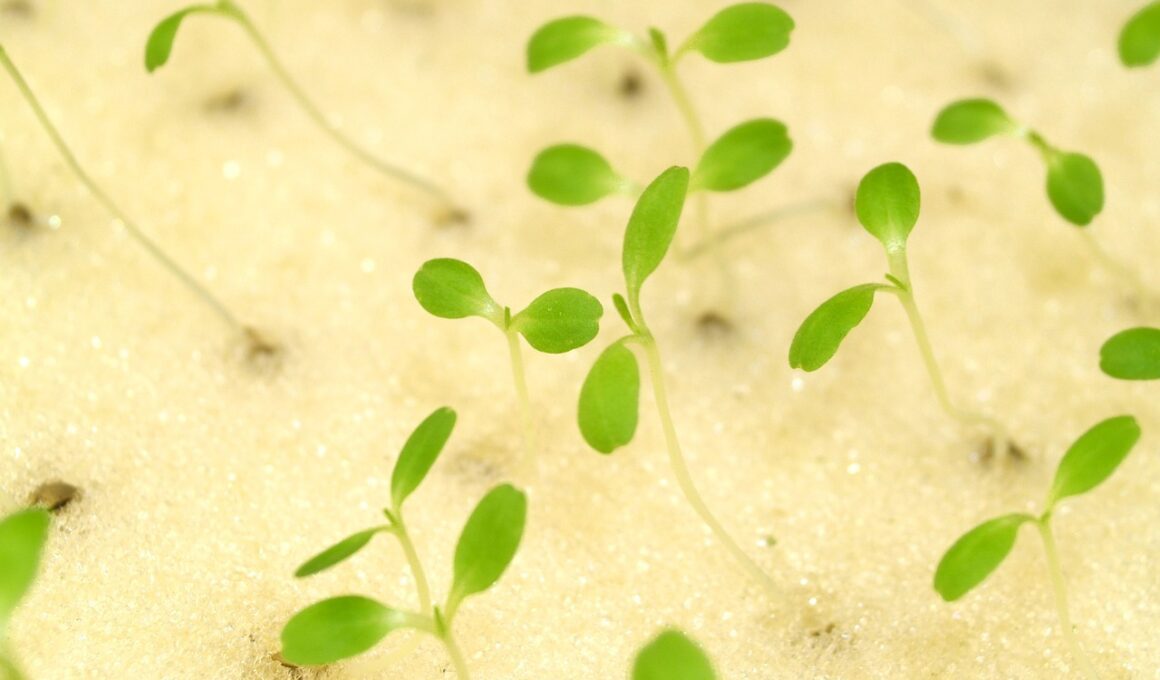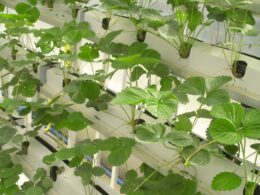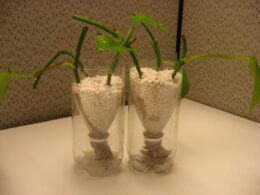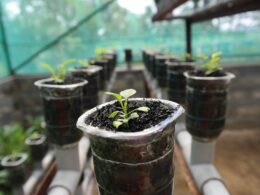Are you tired of constantly buying new heads of iceberg lettuce every time you need some for your meals? What if we told you there’s a way to regrow your lettuce after cutting it? That’s right, you can save money and reduce food waste by regrowing your iceberg lettuce at home.
Fortunately, iceberg lettuce is one of the easiest vegetables to regrow. All you need is a little bit of know-how and patience.
In this article, we’ll discuss the biology of iceberg lettuce, how to cut it for regrowth, factors that affect regrowth, tips for encouraging regrowth, and the proper way to harvest and store your lettuce.
By the end of this article, you’ll be a pro at regrowing your own fresh and delicious iceberg lettuce.
Understanding the Biology of Iceberg Lettuce
So, you’re probably wondering how iceberg lettuce can keep growing after you’ve cut it. Well, the answer lies in the biology of this leafy green.
Lettuce anatomy plays a crucial role in its regrowth. Lettuce has a meristem at the base of its leaves, which contains undifferentiated cells that can give rise to new tissue. So, when you cut off the top of the lettuce, the meristem is still intact, and it can produce new leaves.
Another important factor that helps iceberg lettuce to regrow is photosynthesis. This process is crucial for plant growth and survival. When the lettuce is exposed to sunlight, it can produce energy in the form of glucose, which is used to fuel the plant’s growth.
Even if you cut off the top of the lettuce, the remaining leaves can still photosynthesize and produce energy for the plant.
In summary, iceberg lettuce can regrow after cutting because of its unique anatomy and photosynthesis process. So, the next time you enjoy a delicious salad, remember that the lettuce you’re eating has the ability to keep growing and thriving, even after you’ve taken a bite out of it.
How to Cut Iceberg Lettuce for Regrowth
When you want to regrow iceberg lettuce, you’ll need to choose the right tools, use proper cutting techniques, and time your cutting correctly.
To cut the lettuce for regrowth, you’ll need a sharp knife or pair of scissors. Make sure to leave at least an inch of the base intact to promote regrowth.
Choosing the Right Tools
Picking the appropriate equipment is crucial for effectively cultivating fresh produce at home. When it comes to regrowing iceberg lettuce, you don’t need anything fancy. A simple pair of kitchen shears or scissors will do the trick. Just make sure they’re clean and sharp to avoid damaging the lettuce.
Tool maintenance is important not only for the longevity of your equipment but also for the quality of your produce. When your tools are clean and sharp, they make clean cuts that promote healthy regrowth.
Another factor to consider when choosing your tools is sustainability practices. Opt for tools made from eco-friendly materials such as bamboo or recycled plastic. This reduces the amount of waste produced and helps to minimize your environmental impact.
By making conscious choices about the tools you use, you can contribute to a healthier planet while also cultivating fresh, delicious produce at home.
Cutting Techniques
Now it’s time to perfect your cutting techniques to ensure that your home-grown iceberg lettuce thrives and regrows after cutting. When cutting the lettuce, make sure to use a sharp knife and avoid tearing the leaves. A clean cut is important for the lettuce to heal properly and regrow faster.
When cutting the lettuce, make sure to cut at the right depth. Cutting too close to the stem can damage it and affect the growth of the new leaves. On the other hand, cutting too high above the stem can leave too much of the old leaf, making it harder for new leaves to grow.
As for the pruning frequency, it’s recommended to prune the lettuce every 2-3 weeks to encourage new growth and prevent the plant from becoming too tall and spindly.
With the right cutting techniques, you’ll be able to enjoy fresh, home-grown iceberg lettuce all season long.
Timing of Cutting
To ensure a continuous supply of delicious, home-grown lettuce, it’s crucial to time your cutting just right. Here are some best practices to keep in mind for optimal growth conditions:
-
Wait until the lettuce has reached a height of 3-6 inches before cutting. This will give the plant enough time to establish strong roots and develop a sturdy base.
-
Cut the lettuce in the morning when the leaves are crisp and full of water. This will help to prevent wilting and ensure a fresher taste.
-
Only cut the outer leaves, leaving the central ones intact. This will allow the plant to continue growing and produce more leaves for future harvests.
Common mistakes include cutting the lettuce too early or too late, which can stunt growth and reduce overall yield. Additionally, environmental factors such as temperature and moisture levels can also play a role in determining the best time to cut.
By following these guidelines, you can ensure that your iceberg lettuce regrows successfully and provides a continuous supply of fresh, healthy greens.
Factors that Affect Regrowth
You’ll love learning about the different factors that can influence how well your lettuce grows back after you’ve harvested it! It’s important to note that not all types of lettuce will regrow after being cut, but if you’ve got iceberg lettuce, you’re in luck!
One of the most important factors that can affect regrowth is watering frequency. If you don’t water your lettuce enough, it won’t have the necessary hydration to regrow properly. On the other hand, if you overwater your lettuce, it can lead to root rot and stunted growth. It’s important to find a balance and water your lettuce just enough to keep the soil moist.
Another key factor that can influence regrowth is soil quality. Your lettuce needs nutrients in order to regrow properly, and if your soil is lacking in nutrients, your lettuce won’t be able to grow back as well. You can add compost or other organic matter to your soil to help improve its quality and give your lettuce the nutrients it needs to thrive.
By understanding the different factors that can affect regrowth, you can take steps to ensure that your iceberg lettuce grows back as well as possible. Remember to water your lettuce properly and provide it with the nutrients it needs, and you’ll be rewarded with a bountiful harvest in no time!
Can Hydroponic Lettuce Regrow After Turning Brown?
Can hydroponic lettuce regrow after turning brown? Hydroponic lettuce browning causes can arise from various factors such as inadequate nutrient levels, poor water quality, or improper lighting conditions. However, whether it can regrow after browning largely depends on the severity of the damage. Promptly addressing the underlying causes and providing optimal growing conditions can increase the chances of successful regrowth.
Tips for Encouraging Regrowth
Get ready to be amazed by the simple tricks that’ll help your iceberg lettuce thrive and grow back stronger than ever!
If you want to encourage regrowth indoors, container gardening is a great way to do it. Here are some tips to help you get started:
- Choose a container that’s at least 6 inches deep and has good drainage to prevent overwatering.
- Cut the lettuce leaves about 1 inch above the base, leaving the stem intact.
- Place the stem in a glass of water and change the water every day to prevent bacteria growth.
- You can also add a small amount of fertilizer to the water to provide nutrients for the plant.
- After a few days, roots will start to grow from the stem.
- Once the roots are about an inch long, transplant the lettuce into the container with soil and continue to water and fertilize regularly.
With these simple steps, you can easily regrow iceberg lettuce in the comfort of your own home.
Container gardening is a great way to grow fresh produce and reduce your carbon footprint. Plus, you’ll have the satisfaction of knowing exactly where your food comes from and how it was grown.
So why not give it a try and see how your lettuce thrives?
Harvesting and Storing Iceberg Lettuce
Harvesting and storing your fresh, crisp iceberg greens is easy with these helpful tips! When it comes to harvesting, it’s best to wait until the head of lettuce is firm to the touch and has a tight formation of leaves. This is the optimal harvesting time for iceberg lettuce. To harvest, simply cut the head of lettuce off at the base, taking care not to damage any of the surrounding leaves.
Once harvested, it’s important to store your iceberg lettuce properly to ensure it stays fresh and crisp for as long as possible. The best storage method for iceberg lettuce is in the fridge, wrapped in a damp paper towel and placed in a plastic bag. This will help to maintain the moisture levels necessary for crispness.
It’s also best to store the lettuce in the crisper drawer to protect it from excess moisture and ethylene gas, which can cause it to spoil faster.
By following these simple tips for harvesting and storing iceberg lettuce, you can enjoy the fresh, crisp taste of this delicious green for longer. Remember to harvest at the optimal time, and store it properly in the fridge with a damp paper towel and plastic bag.
With these tips in mind, you’ll be able to enjoy delicious salads and sandwiches made with fresh, crisp iceberg lettuce whenever you want!
Frequently Asked Questions
Can other types of lettuce regrow after cutting, or is it only iceberg lettuce?
If you’re interested in regrowing lettuce, it’s worth comparing regrowth rates between iceberg and other types. While iceberg lettuce does regrow after cutting, other varieties may regrow faster or more easily.
Regrowing lettuce is beneficial for sustainability because it saves you money and reduces waste. Plus, there’s something satisfying about growing your own food!
So whether you’re trying to save money or just want to enjoy fresh lettuce all year round, regrowing lettuce is a great option to consider.
How long does it take for iceberg lettuce to regrow after cutting?
If you’re looking to regrow iceberg lettuce after cutting, it’s important to keep in mind the growing conditions and harvesting tips that will help you achieve the best results.
First, make sure the soil is well-draining and rich in nutrients.
Water the lettuce regularly and keep it in a spot with plenty of sunlight.
When harvesting, use a sharp knife to cut the lettuce about an inch above the soil line.
After cutting, it typically takes about 2-3 weeks for the lettuce to regrow.
With these tips in mind, you can enjoy fresh, homegrown iceberg lettuce all season long.
Is it necessary to use a specific type of soil or fertilizer for regrowing iceberg lettuce?
To successfully regrow iceberg lettuce, it’s important to use the right soil types and fertilizer options.
When it comes to soil, you want to choose a type that is well-draining and filled with nutrients. A good option is to mix in compost or a balanced fertilizer to help provide the necessary nutrients for the lettuce to regrow.
Additionally, you can fertilize the soil with a nitrogen-rich fertilizer to encourage growth. It’s important to note that using too much fertilizer can actually harm the lettuce, so it’s best to follow the instructions on the package.
By choosing the right soil and fertilizer, you can help ensure that your regrown iceberg lettuce is healthy and thriving.
Can iceberg lettuce be regrown in a container or does it require a garden bed?
If you’re interested in regrowing iceberg lettuce, you’ll be happy to know that it can be done in a container or hydroponic system.
With container gardening, you can use any type of pot or planter with good drainage and fill it with nutrient-rich soil.
If you prefer hydroponic growing, you can use a water-based system and add nutrients directly to the water.
The great thing about regrowing lettuce in a container or hydroponic system is that you can control the environment. This means you can grow lettuce year-round without worrying about pests, weather, or soil quality.
Plus, you can easily move your container or system to a sunny location for optimal growth.
So, whether you have a small balcony or a large backyard, regrowing iceberg lettuce is a fun and easy way to incorporate fresh greens into your diet.
Are there any risks or downsides to regrowing iceberg lettuce rather than buying new lettuce?
When it comes to regrowing iceberg lettuce, there are both pros and cons to consider.
On the one hand, it can save you money and reduce waste, as you can continue to grow new lettuce from the same plant. Additionally, growing your own lettuce can give you a sense of satisfaction and control over your food supply.
On the other hand, regrown lettuce may not be as nutritionally dense as fresh lettuce, as it may have depleted some of the nutrients during its regrowth process. Additionally, there is a risk of bacterial contamination or disease when regrowing lettuce, especially if you’re using soil that isn’t properly sanitized.
Overall, while regrowing iceberg lettuce can be a fun and cost-effective way to ensure a steady supply of fresh greens, it’s important to weigh the potential risks and downsides before diving in.
Conclusion
So, does iceberg lettuce regrow after cutting? The answer is yes, it can.
Understanding the biology of iceberg lettuce and how to properly cut it for regrowth are important factors in encouraging regrowth. Additionally, factors such as water, light, and temperature can affect the regrowth process. By following some simple tips, such as keeping the cut ends moist and providing adequate light, you can increase your chances of successful regrowth.
Once your iceberg lettuce has regrown, it’s important to know how to harvest and store it properly. Harvesting the leaves when they’re young and tender will provide the best flavor. Storing the lettuce in a plastic bag in the refrigerator will help it stay fresh longer.
With a little patience and proper care, you can enjoy a continuous supply of fresh, homegrown iceberg lettuce.









